Sustainability and food security is a huge factor in why people start homesteading and can be created with a home garden.
My guest today, Luke from MIGardener, saw early on that the cost of a packet of seeds as somewhat prohibitive and proceeded to do something about it. He started MIGardener in 2011, with the plan to inspire others to grow a garden, live healthier lives, and have fun doing it. With the help of social media, that was all made possible! In 2014, his beautiful fiance joined him in that dream. With her career in design, she has established the creative vision for MIGardener with her amazing eye for detail. Sindy and Luke got married in 2015 and they dedicated their full attention to working hard on building their business, growing a 100% organic garden, and achieving financial independence by opening up their very own seed store!
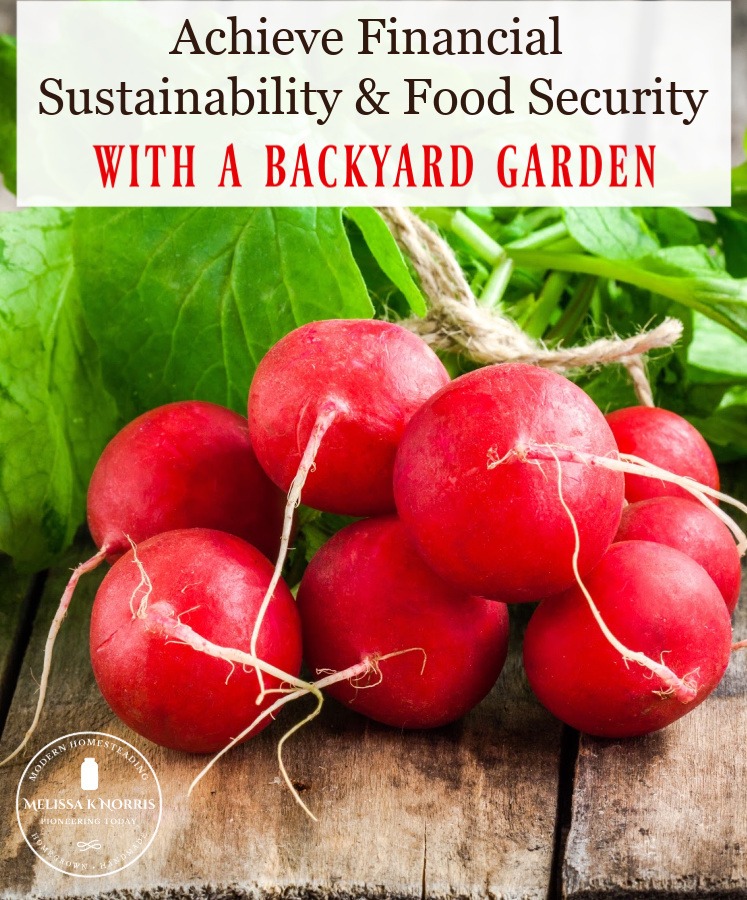
Listen in below to the full podcast, Episode #243 Achieve Financial Sustainability and Food Security With a Garden of the Pioneering Today Podcast, where we don’t just inspire you, but give you the clear steps to create the homegrown garden, pantry, kitchen, and life you want for your family and homestead.
Check out the heirloom seed options at MIGardener here and use coupon code: pioneering15 at checkout for 15% OFF!
Affordability as a Driving Factor
Melissa: I love that we have similar goals. Did you grow up with a garden or did you come into growing your own food later in life?
Luke: People always ask me what really got me into gardening. Not a whole lot got me into vegetable gardening, It was just a fascinating thing. I had people in my family that grew vegetables, but growing my dad did not garden whatsoever. He was a working man and gone most of the day. So when I was really young, my mom was into flower gardening. She had me out in the garden so she could take care of me while tending to the flower garden. I wasn't really involved in the process, but it got me involved with the concept of growing stuff.
It wasn't until I was about six or seven before I was given a tomato plant and told I had to grow that plant. It connected me with me, even at that young age, that you could take something that was a plant and grow food from it. At that young age, I always thought that you had to get food from the grocery store. It was such a wild concept to me that I could grow something that was food on a plant that started from a seed. It lit a passion and grew out of nowhere. I took the master gardeners course and did as much as I could to educate myself because I really didn't have the background in vegetable gardening that I would have liked to have had.
Melissa: What a blessing that you realized that at that age because, sadly, there are so many adults in modern society that honestly think that vegetables and fruits, for the majority, come from the store. It's not even in their thought process that they could be growing food at home. I know it's both our goals to make that not be the norm and so that everybody realizes that they can grow their own food at home.
Oftentimes people ask when they can start planting based on their gardening zone. Or they'll say they're in a certain zone and ask if it's ok to plant something now. The thought is that the only thing they need to be concerned about is the zone erroneously thinking that it's sufficient when in fact, it's all based on the first and last frost dates. Luke and I have both noticed, as we help people all around the country and nationally, that people have that misconception. Even though I'm in gardening zone 7 and Luke is in zone 5, surprisingly we are planting our warm-weather crops that have the same growing window of warm weather crops almost at the exact same time.
Luke: Yeah, it's totally crazy. It was really surprising. It's not often that I get to compare with someone from the west coast, usually more so with people on the east coast. So when we were talking before our interview officially started about when we're starting our tomatoes and herbs, it solidified everything I've been trying to tell people on my channel, which is that you really cannot go by growing zone. You and I are two different zones two zones apart and several thousand miles apart (Michigan to Washington state) and we still have the same planting window. So you truly cannot go by the common misconceptions because you'll definitely be led astray for sure.
Melissa: Totally agree. Not only do you do gardening and you teach it, but, and I think this is really interesting, you actually started a seed company as well. Are you doing the seed company full-time?
Luke: Absolutely. We've been so blessed to have just an incredible community of people around us. It started out as just something that we wanted to do as a service to give people an inexpensive source for seed to cut down barriers and excuses. Growing up one of the things I noticed when I was on a high school budget which is when I first started gardening for myself for my own food production. I noticed on my high schoolers budget that I couldn't afford more than a couple of packets of seed. I know a lot of people are like that, even adults. Money is tight and we all have a budget and financial constraints.
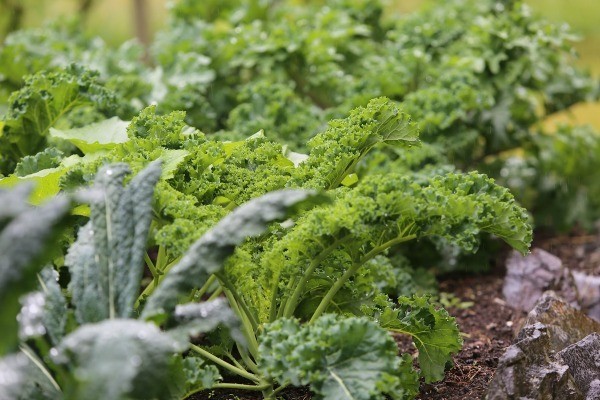
So I set out to do a small project of offering a handful of seeds for an inexpensive price. It stuck so well, that my then-girlfriend now-wife, said I really should take this on and start growing this business because she could see it going places. So it started out as an attachment of the MIGardener YouTube channel to give people the resources to grow food in addition to the information on how to grow it. Back then we couldn't foresee that it would be where it's at now. We are just short of 20 employees that work with us; we ship all around the world. We started with a small selection of about 12 varieties of seed and now we're up to well over 550 varieties. It's truly incredible.
Organic Methods vs. Certified Organic
Melissa: That is awesome. Are they organic, heirloom or a combination?
Luke: They're all 100% heirloom. They're not all certified organic, but they are at least grown with organic methods. There's a fine detail. It just really comes down to what you can legally call something because organic is a certification.
They're grown with organic methods, but we're very strict because anything we put in our garden has to be 100% organic. So, for us, anything that we would put in our garden, we also want to supply to other people. We source seed from small family farms throughout the United States, working with over 30 different farmers. It's cool to meet them and hear their stories. Not only that, but we glean how they grow stuff for our own garden.
Melissa: I'm with you on organic. As long as it's used with organic practices, I'm fine if it's not certified. That's one of the reasons I love doing so much local where you can actually meet the people who are growing it.
We're the same way. We grow our own vegetables and fruit but we also raise our own meat and do it for our own consumption. But I tell people if you're looking for a farmer, most small farmers aren't going to become certified organic if they're just selling a small amount per year. A lot of times they're using organic practices. So you can get the organic without the certification, but it's knowing that source and actually being able to talk to that person and going over their growing practices.
Luke: Absolutely. That's one thing we've tried to stress to people too, 'cause you'll get people that say they'll only buy strictly organic. Which is fine, they can have their own beliefs, but you know, when it really comes down to the finite details what you're really paying for is a label. Unfortunately, a lot of farmers just don't have the resources to pay for that label. And they do the right things, take the right steps. That's why we try to partner with as many as we can that are doing the right things because we really believe that if you're not using pesticides, fungicides, herbicides, nothing synthetic, you're doing the things the way mother nature would grow these crops.
How Much Does It Cost to Grow a Garden?
Melissa. Totally agree. This leads me to the next question. There's two sides of the camp, people who say there are all this free food and their saving so much money. Then there's the other side, especially people who are just starting out that don't have any of the infrastructures and starting from zero, who would love to grow a garden but it's a lot of money for them to get started. Knowing that you've helped a lot of people through your seed store, how much do you feel that you can save with having a garden at home?
Luke: We've been cataloging everything that we harvest and eat for four or five years now. We try to calculate how much money we can save in a given year. Obviously it does fluctuate from year to year with good seasons and bad. Two years ago was our best season ever with the help of our fruit trees that did super well. We saved just shy of $4,000 on our grocery bill…and that's not with a huge garden. We don't have a farm. Our garden space is only 2,000 square feet and 8 or 9 fruit trees so it's small. We actually live on a third of an acre in the city.
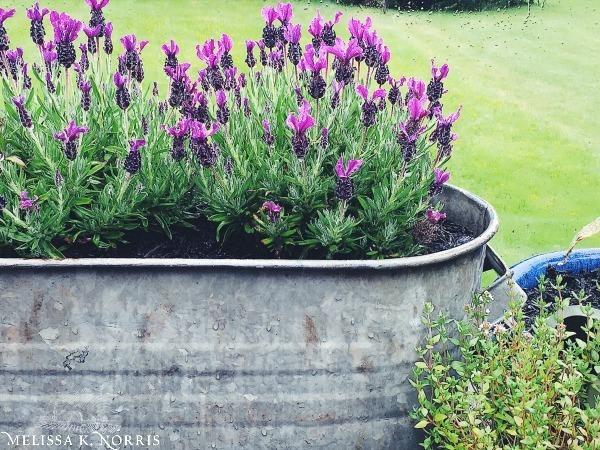
You Don't Need a Big Garden to Make an Impact
Part of doing this is showing people that this is definitely possible even on a small lot. You don't have to have a big garden, big equipment, all this costly stuff. You don't even have to have raised beds if you don't want to. We grow in raised beds because it's easier for us to work and manage them. But you don't have to have them. I've always had the premise that gardening can be as expensive or inexpensive as you want. A lot of people get so overwhelmed that they end up impulsively buying all this stuff, then look back and say that was an expensive tomato. Well yeah, you made it expensive. You didn't have to though.
Melissa: I completely agree. If you're going to invest in anything, it's your soil health because healthy soil is going to be the difference between an easy gardening season and one where nothing grows well, weather aside. Even investing in the soil doesn't have to be expensive if you're composting. It can really be easy to build up your soil without buying a ton of organic nutrients and fertilizers. If you have some dirt and some seed, you can grow some of your own food.
One of the blessings and curses of this age is the internet. We've never had so much information available to us. My husband and I have been gardening for 20 years and I was raised with a big vegetable garden and every year there are new things that I want to grow or where I end up looking something up. On the other hand, when we have all of this at our fingertips, we often see these beautiful lush gardens, gorgeous raised beds, and containers. Sometimes we get it in our heads that we have to have the same thing in order to grow our own food. While you can build up to that, you don't have to start out that way.
Luke: Absolutely. I've seen a lot of people that assume that you have to have this massive investment. It's not to say you don't have to necessarily pinch pennies if you have the disposable income and want a beautiful garden. But for people who don't have a lot of disposable income, start with one raised bed, start with two raised beds. Even if you can't afford, say 20 raised beds off the bat, start with two and add two per year. After 10 years you have your 20. It's a natural thing that you can invest in slowly, so you don't have to do it all at once either. There are so many ways to get a bountiful, money-saving garden that's going to make a difference in your family's food bill. There's no one specific way to do it.
Melissa: So true. No two gardens are really the same and they probably shouldn't be. They need to be customized to each to each family, where your family is at, and what you have at your disposal.
So you're on a third of an acre and your growing that much food, which is awesome. How much food are you able to grow in your home garden setting?
Luke: That comes down to the crops that your growing. For us, we focus on highly productive crops. I always say if your growing for yourself, the best thing to do is focus on seeds that give you a return of more than a one to one ratio. Nothing against beets, you can grow those, but the idea that you're planting one seed and you're getting one beet or carrot, that to me is not a great use of space for me. We still do grow some carrots and beets but when we plant a bean seed, for instance, three or four plants, they can feed a family of three or four pretty much the whole summer long because the more you pick, the more you get.
Then, by the time summer is over, you're sick of beans. But when you plant out 30 or 40 bean plants, then you actually have some to eat and then you have some to freeze or can. So now you have food storage, which is going to save money in the offseason. It really comes down to what you're deciding to plant. Things like potatoes, one potato set, is going to give you two to three pounds of potatoes. We all know that when you plant three or four tomato plants, you're giving them away, pushing them onto your neighbors.
So it's really about what you're growing. With our focus being highly productive crops and then combining that with what we call a bio-intensive or high-intensity gardening method, those two put together allows us to grow incredible amounts of food. We're saving on average three to $4,000 a year on our grocery bill. It's completely possible to grow not only a whole summer's worth of food but also your whole fall and winter's worth as well.
We also incorporate some type of season extension. We'll use caterpillar tunnels. They're like low PVC hoops that have some plastic draped over the top of them. Very basic but they allow us to grow food, like in a greens, almost into January, which is fantastic. So we're not just growing in summer. We're growing in spring, summer, fall, and even winter with some crops. With those methods and types of crops that we grow, we're able to make a massive dent in our grocery bill.
Melissa: I think definitely employing those season extension tactics has been key in helping us do more year-round gardening. Right now I have lettuce growing outside under a clear Rubbermaid plastic tote. I just have it upside down over my lettuce which I've had growing since December. It's definitely not growing as fast as in the spring and summer, even with the protection. I've had my beets under a very small tunnel-like you described. I had them under there so that they wouldn't freeze. I just harvested the last of them last week. So taking advantage of things like that for things that are cool weather plants they'll keep on going with that extra five to 10 degree warmer protection.
We really only started doing that about three or four years ago. Prior to that, we were growing as much as possible during the warm weather, summer months with a year's worth of food as my goal. Not every crop though. I grew a year's worth for up to 60% of our vegetables that feed our family for an entire year to preserve and put up.
We have acreage for our livestock but our actual vegetable garden is just 30 by 20 feet big garden and then I have a small high tunnel where I actually grow our tomatoes and peppers. Here in the Pacific Northwest, we have the same growing days, but I think our weather is a lot wetter. I have to have some coverage for the tomatoes so that I don't have to deal with any blight. People are always surprised with how much I grow and preserve with just that small amount of space. Doing succession planting and basically planting three crops spring, summer, and fall which carries through winter is really key.
Maximize Yield
What are some ways that you feel people who are on a budget can save the most amount of money with the garden?
1. Grow the Right Crops
Luke: Going back to what I said about planting crops that give you more than a one to one ratio, that's definitely a great way to save the most amount of money. I think it's a novelty to want to plant corn or those idealistic crops, as I like to call them. They're very nice to grow if you have space but unfortunately, a lot of gardeners are short on space. They want to grow everything, and to some extent that might be okay. I think a lot of people fall short of what they can produce because they try to do one of everything.
2. Use the Space Efficiently
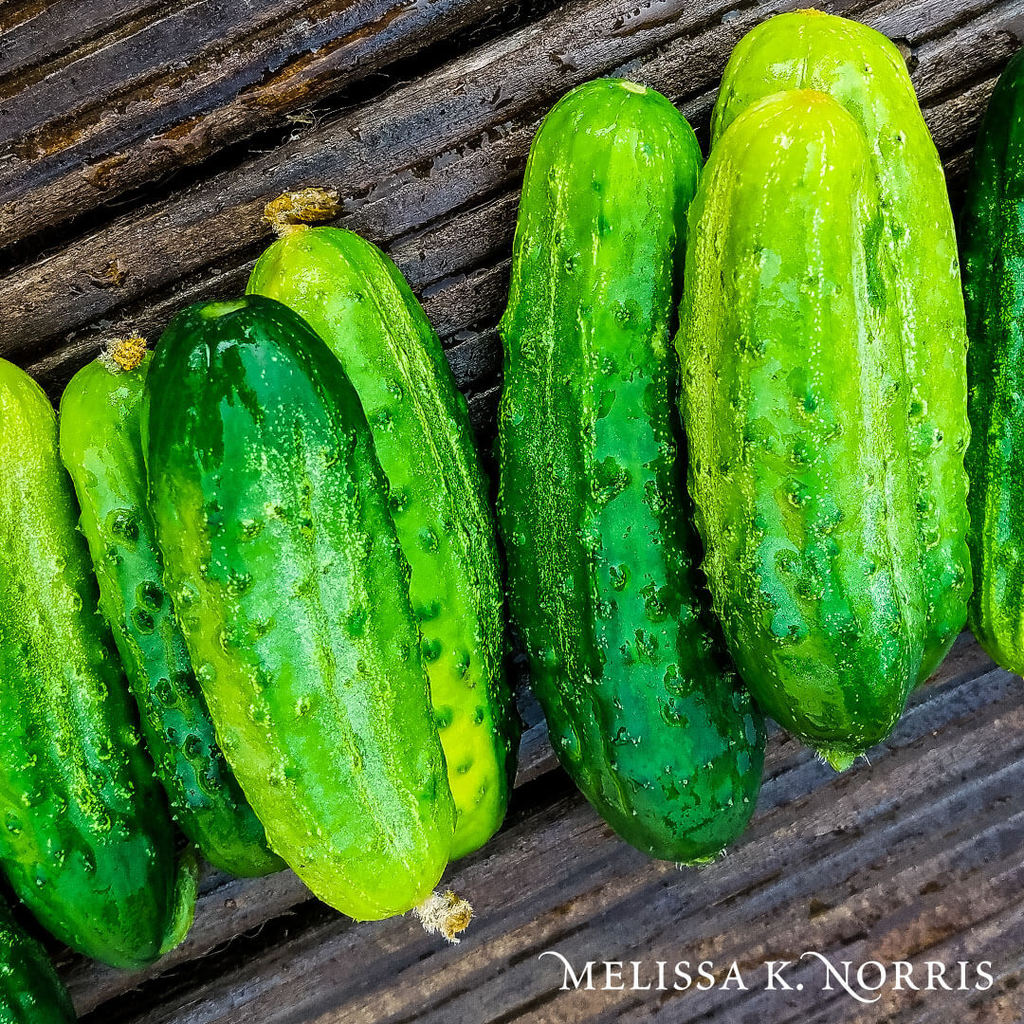
I like to say that I run my garden like a business. I know there are some things I cannot do and there are some that I can do on my own. That's what we call outsourcing. So for things like corn, where you're planting one corn seed, your getting a massive plant taking up a ton of space and you're really only getting one or maybe two ears per stalk. That's not a great use of space. It's very inexpensive to buy too. I'd much rather go down to my local farmer's market and support a local farmer. Buy a dozen ears of corn for $4. It's insane how much corn you can buy for such a little amount of money.
3. Grow Crops That Are Expensive to Buy
Buy those from a local farmer, use that space to grow things like herbs, tomatoes, peppers, potatoes. Herbs specifically. We use so many herbs in our cooking, dry herbs don't really do it for me anymore. They just don't have the same fragrance, the same freshness, the color – that punch that they give food when fresh is so much better than dried. We will dry some of our herbs for the offseason. But fresh herbs, if you're buying it's $14 to $17 a pound. That doesn't sound terribly expensive but most of that cost is in the stalk and not the leaves. You're buying it for the plant weight so your spending way more than you really need.
I always tell people, if you only have containers to grow in, don't try growing things other than herbs. Start with herbs. Start with the high dollar items.
4. Grow What You Like and Eat
Then work in stuff that you eat the most of, like tomatoes. Why on earth would you grow carrots if you don't like them? If your growing for a hobby and the fun of it, sure, grow the carrots. But if your goal is to save money on your grocery bill it makes no sense to plant stuff that your family won't eat.
5. Know What to Grow Yourself and What to Outsource
It also doesn't make sense to grow things that don't have a high dollar return. Like I mentioned with the corn, carrots, and beets…things like that, I can go down to any farmer's market within a five to 10-mile radius and find all three. And they're so much expensive because they're being grown on acres and the farmers are specializing on that specific crop or a few specific crops. Therefore, because they're growing on acres and I'm growing in square feet, most costs have to be assessed. It's definitely important to consider what you can and should buy from someone else versus what you can grow yourself.
Melissa: I am in complete agreement with you. It's in my book, The Family Garden Plan. I'm the same way with corn now. We used to grow corn, but corn is also a fairly heavy nitrogen feeder; it takes a lot from the soil. And you only get two, maybe three, ears of corn per plant. So we don't grow it anymore. I have to confess, I don't usually grow potatoes either, because here where we live, there is a huge potato farm where I can get some cheaply.
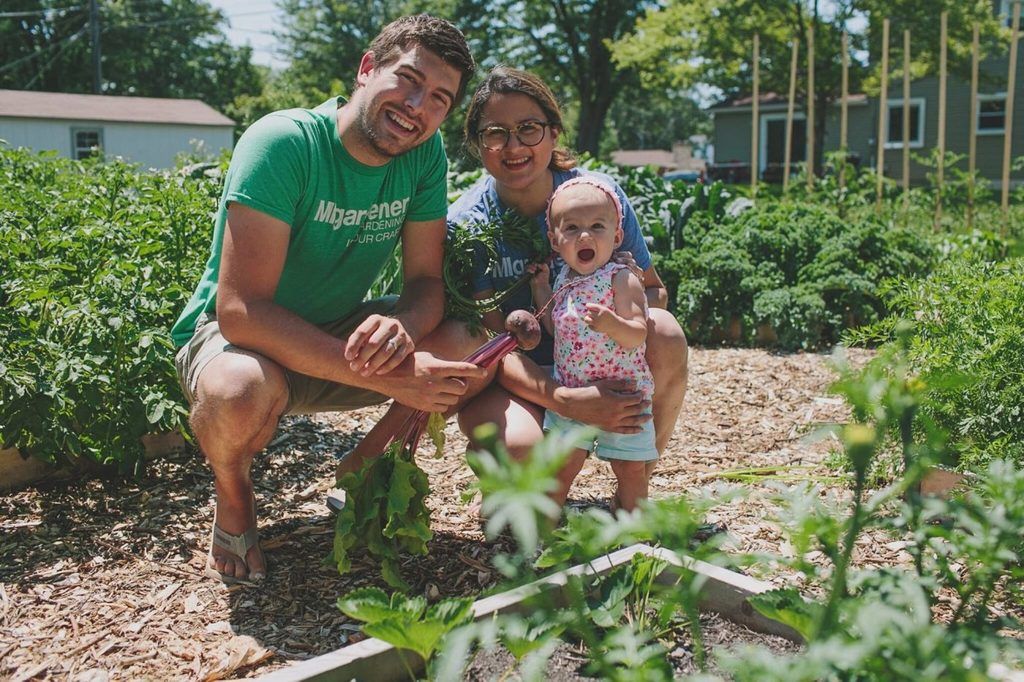
I think that's key because I feel like what we think should be in a traditional summer vegetable garden, like corn, is not necessarily the best use of your growing space. I'm glad you hit on that.
Are There Nutritional Differences Between Homegrown & Store Bought?
What is the nutritional difference between homegrown and what's available in a conventional store?
Luke: That's something we talk about quite a bit on our channel because it's so important to realize that anytime you support a conventional grocery store, you're supporting a model that is convenient. Yes, we can't grow mangoes here in Michigan. Not very easily at least. So with mangoes and things that we can't grow locally, it's a convenience factor to buy them from the grocery store. But you have to remember that anything that is convenient, it's very likely that corners have been cut. With tropical fruit, that doesn't really fall into my criteria of things that I really worry about because I think fruit is great for you. But when you're looking at things like lettuce, when you buy a head of lettuce in Michigan, most of that lettuce, about 80% of it, comes from California, Arizona or New Mexico. For you, that's a bit closer but I wouldn't consider it local by any means.
For us here in Michigan to be buying lettuce that we can grow under caterpillar tunnels until January, or on a window sill, in a container, or under grow lights in the basement, which we do, doesn't make sense. We can harvest the lettuce that we're growing right when we need it right from the source. It's not been shipped hundreds of miles. It's not been put in a truck and then onto another truck, and then put in a grocery store and then sat there for a couple of days.
When you look at the nutritional value of stuff that has been shipped from overseas…look at blueberries for example. Guarantee if you go to the grocery store right now (February) those blueberries are from Peru. Most of your vegetables and fruits are going to come from Peru during this time of year. There have been many studies that have shown that within 24 hours, you lose about a quarter of the nutrition that was once in the vegetable. That's due to oxidation. Prime example, if you cut an apple and leave it on the counter, they turn brown. That's because of oxidation.
Anytime oxygen gets into your fruits and vegetables, it ruins those vitamins and minerals because they begin to oxidize. Just because your blueberries aren't turning brown doesn't mean they're not oxidizing. That oxidation process begins as soon as they're picked from the plant. That's why I always advocate that homegrown is so much better tasting because all those vitamins and minerals add flavor.
Water content is an issue too. Cucumbers are 97% water. When you harvest a cucumber from your garden it just drips water. We tested the water content of a store-bought cucumber and it was 81%. So how many vitamins and minerals have also been lost through the process? That's not even taking into account the fact that when you grow it yourself, you're not beholden to someone else's farming practices. I don't know what they sprayed on their crops. I don't know how the crops were stored.
Nutrition is Only One Component to Consider
You hear all the time about things like, unfortunately, rat droppings or other things being in the food. The FDA has allowances for how many droppings are allowed per a certain volume in certain foods. That's why I can't say this strongly enough. We're all nauseous at the thought of it but yet we just as quickly go to the grocery store and buy a vine-ripened tomato. The sad thing is that we don't have control over that whole process. The nutritional value is a small component to a much bigger picture that food quality, when grown from home, is not even comparable.
The nutritional value is a small component to a much bigger picture that food quality when grown from home is not even comparable.
Melissa: I completely agree! The other factor is that in this day and age, we're spoiled. We are able to go into the grocery store and by fresh, and I use that term loosely depending on when it was actually picked and how long it took to ship, produce all year long here in the U.S. rather than eating seasonally. I think if we go back to eating seasonally, including preserved, we'll get more nutrients in our diet. Home preserved foods are still higher in nutritional value than store-bought preserved because the fruit is allowed to fully ripen before harvesting. Then it's brought in and frozen or made into jam or jelly, or being canned. There's really only a few hours between harvest and when they are preserved.
Store produce oftentimes isn't actually ripe at the time of picking because then they would have a shorter shelf-life. Most of the time what we get are under-ripe, but sometimes they'll use chemicals or different things to try to get the color brought out to appear ripe. If we get in that mindset of eating things more when they're in season only, unless you have preserved it, that will naturally set ourselves up more to not rely on buying the things that are shipped in those questionable conditions.
Eat Seasonally
Luke: I could not agree more. We've seen even with our own family is that when we eat seasonally it actually allows us to continue to save more money. Because it's seasonal you're able to grow it yourself or you bought it locally. Seasonal items also cost less because there is more of an abundance. Prime example, if we go by the seasons, we can still have tubers like potatoes. They're either in a root cellar or they can even be left in the ground and covered with leaves, harvesting as needed. Parsnips, beets, carrots…they can all be stored exactly the same way. Those are all seasonal as well as sweet potatoes, onions, and garlic.
Lettuce is very seasonal too. If you have the infrastructure to grow it outside like we do, it's very easy. A lot of people just assume that they would starve if they had to eat seasonally here in Michigan. I tell people that we eat 75-80% of the food that we eat are by the season. We're not starving in the least. Even things like cabbages and Brussels sprouts, you just have to open your mind.
Now, they might not be the colorful things like tomatoes and peppers but I think personally that our bodies do better when we're eating stuff in season. In the winter months, there's a higher instance of colds and flu. The seasonal foods are high in minerals like iron and zinc yet people take supplements for them. Potatoes are high in potassium yet people take vitamin supplements for potassium. It's confusing to me why people would take supplements rather than eat the real thing.
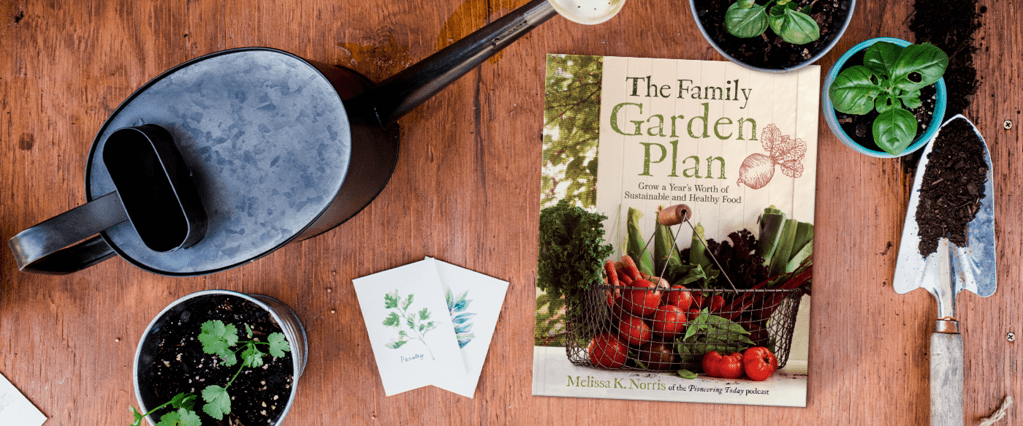
Melissa: On nutrition, our bodies, when pulling the nutrients from a plant, it's different and you'll actually absorb and use it more than if you're taking it in from a vitamin form. The reason is that the nutrients are accompanied with everything else that is in that plant. Those components that are vital for our bodies to be able to process the nutrients aren't necessarily there in the tablet you get from the store.
Resources:
The Family Garden Plan
Food Defect Levels Handbook



